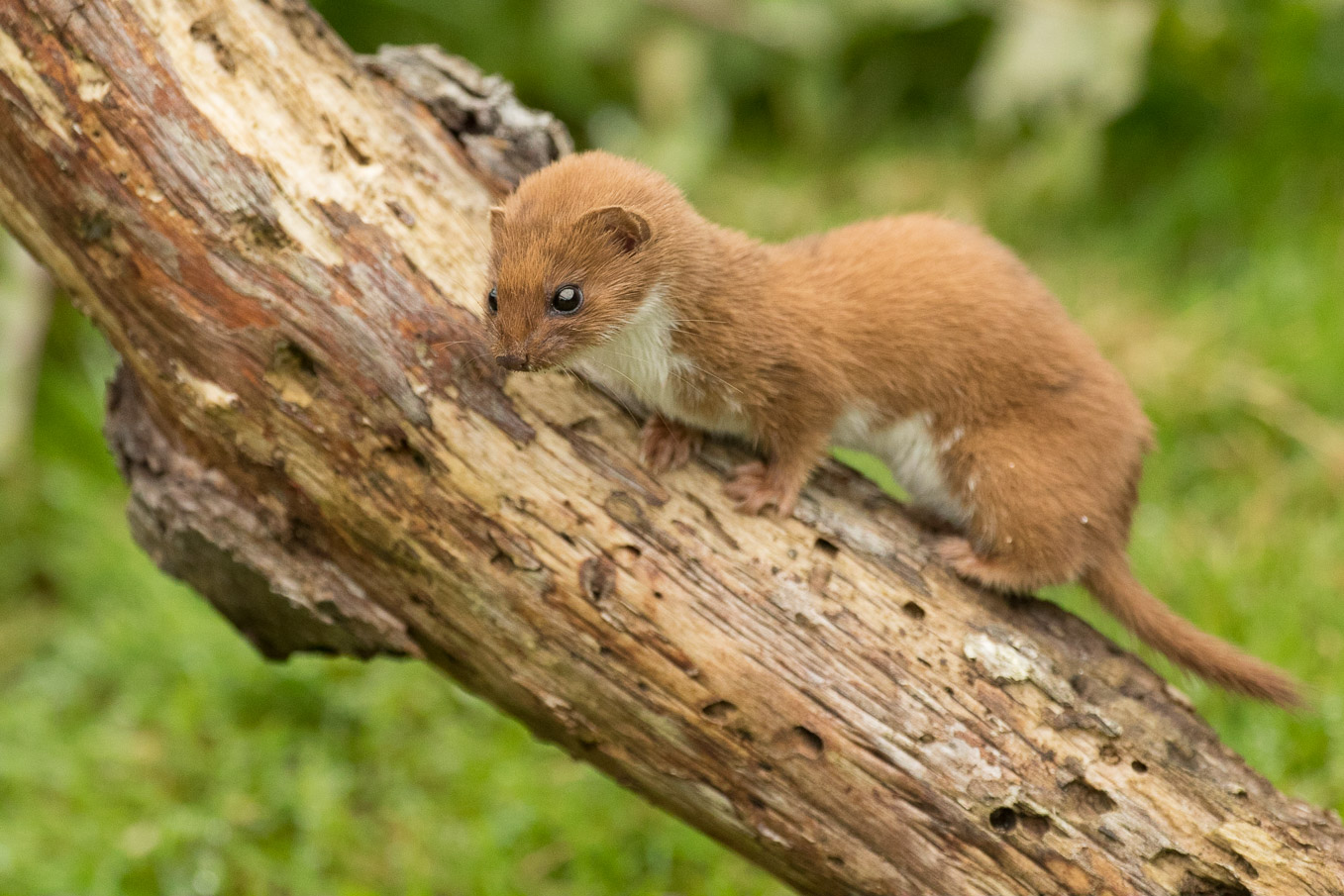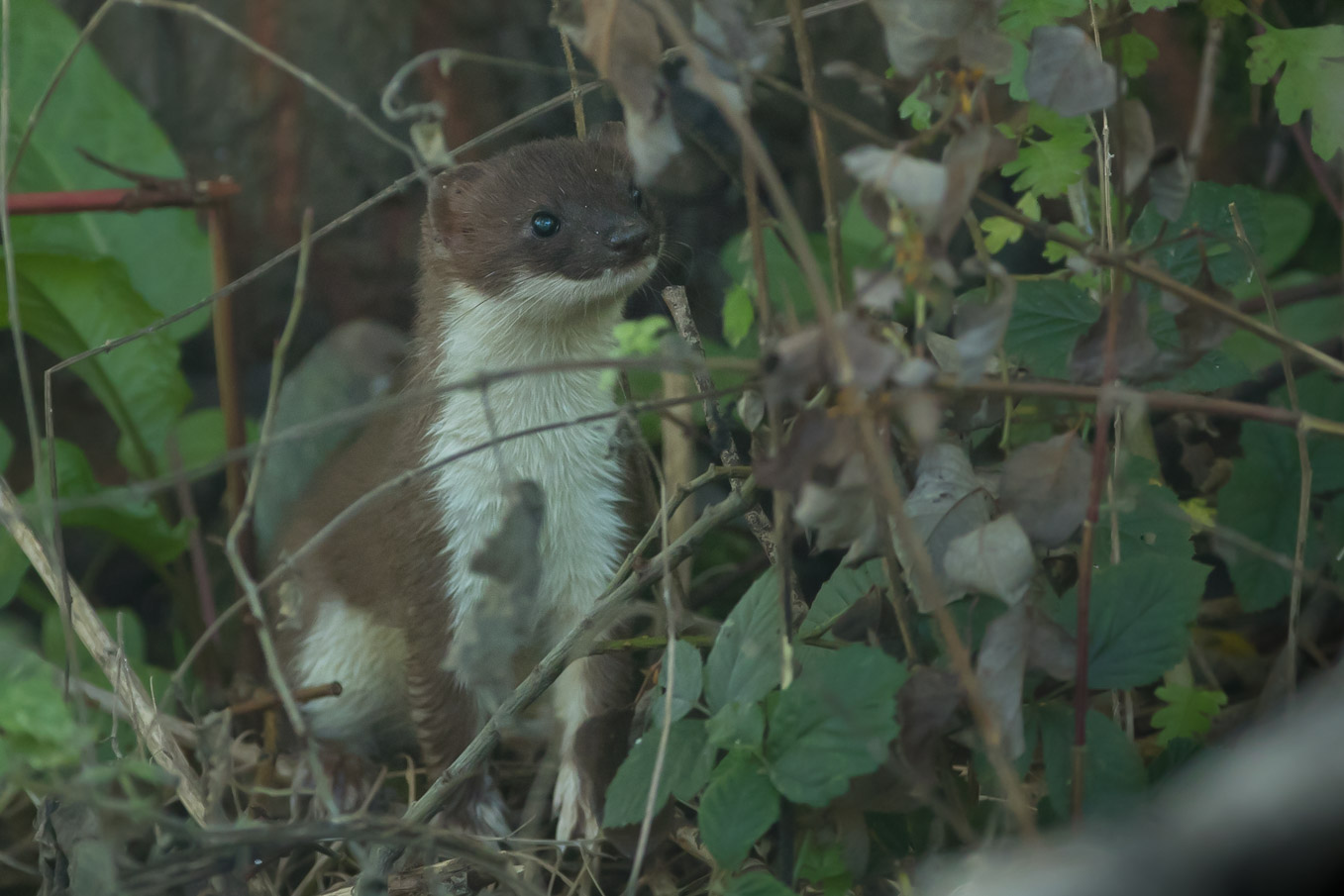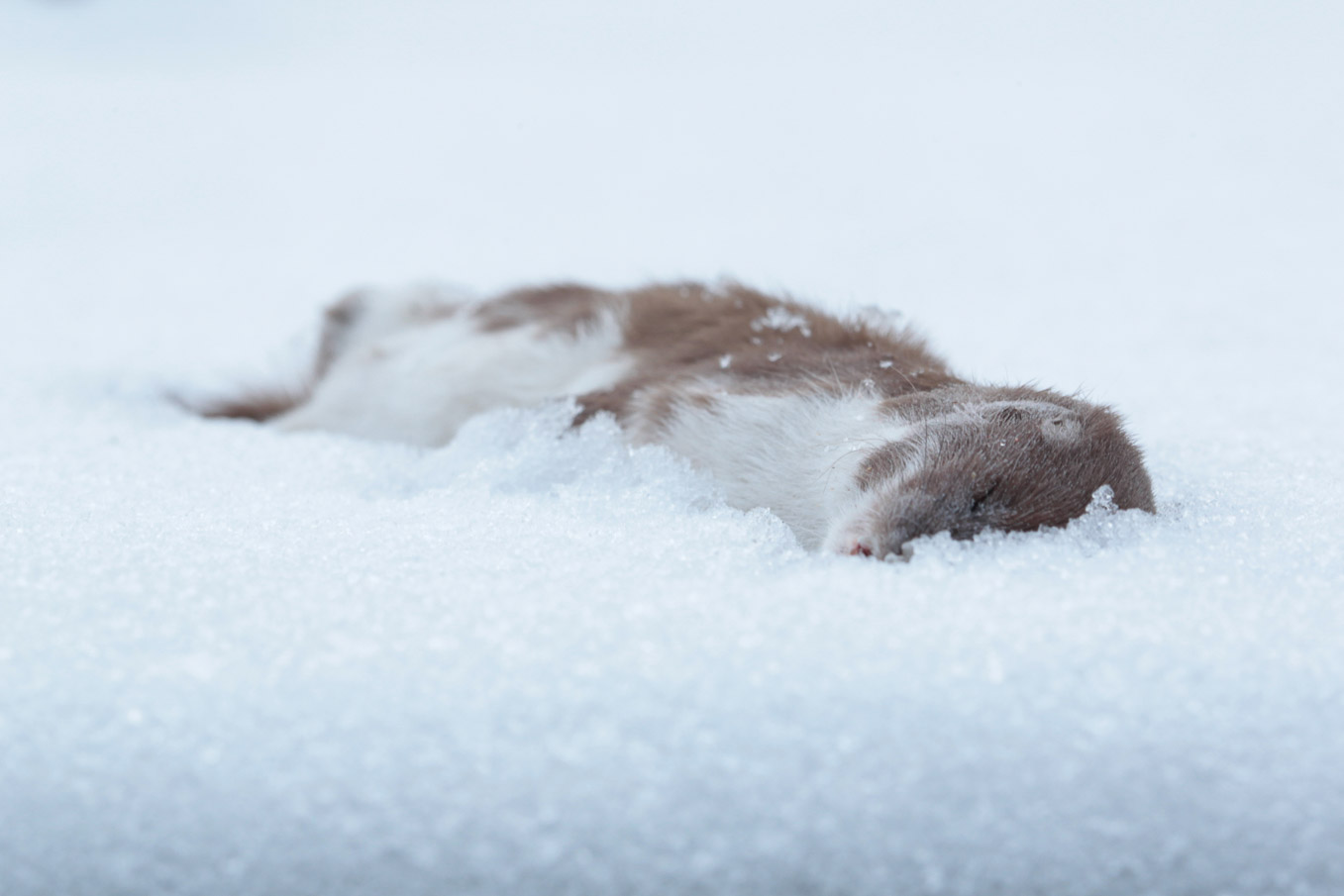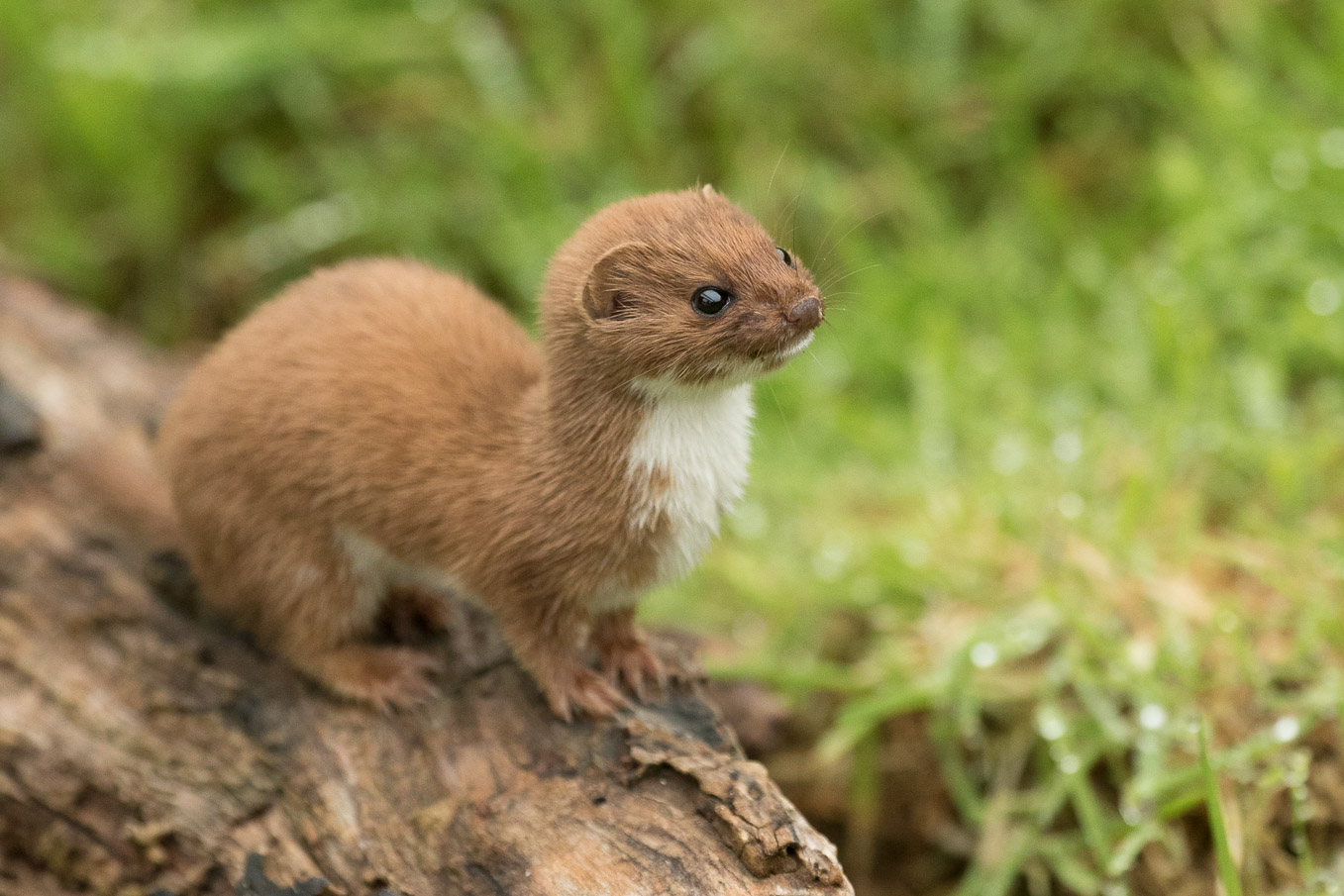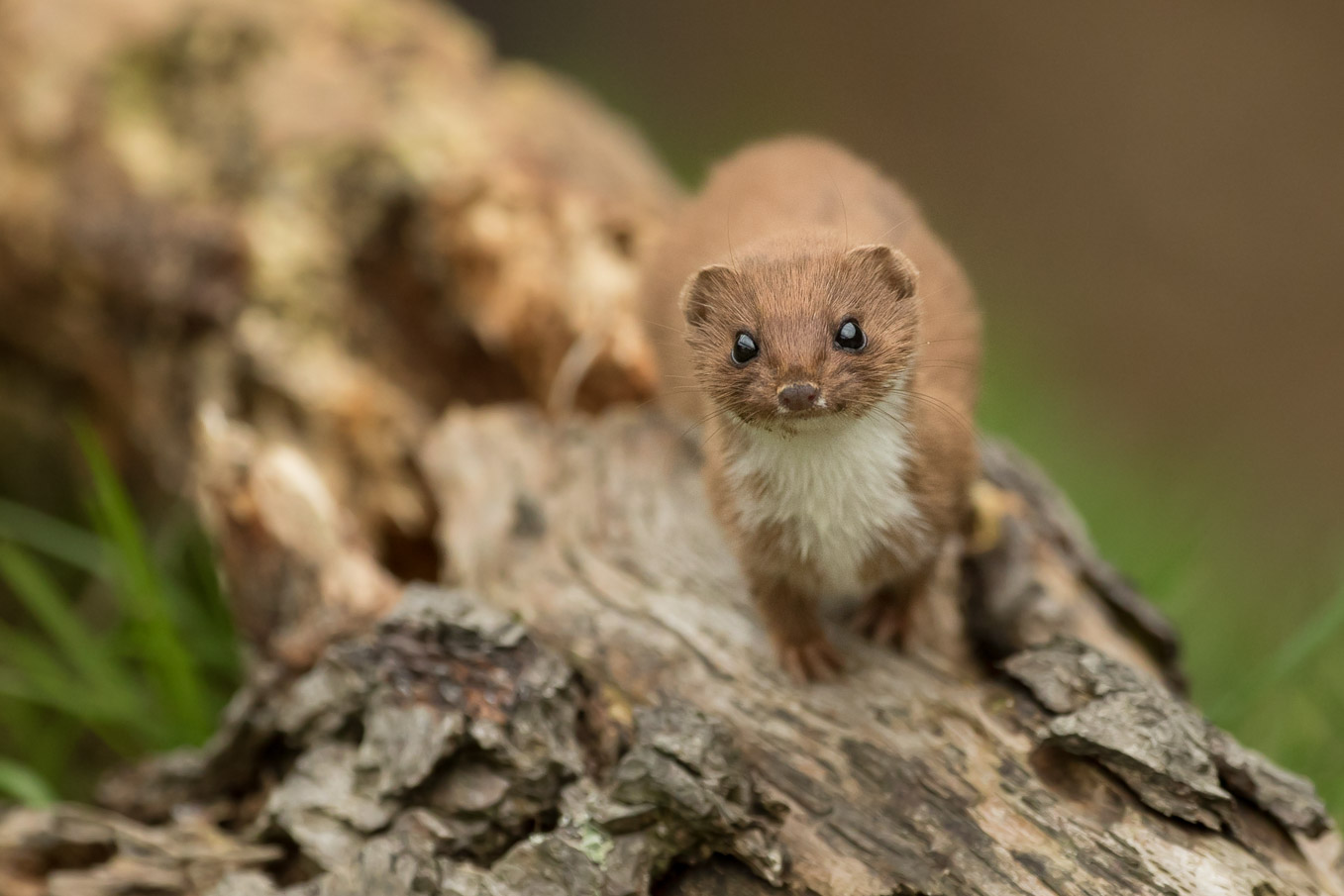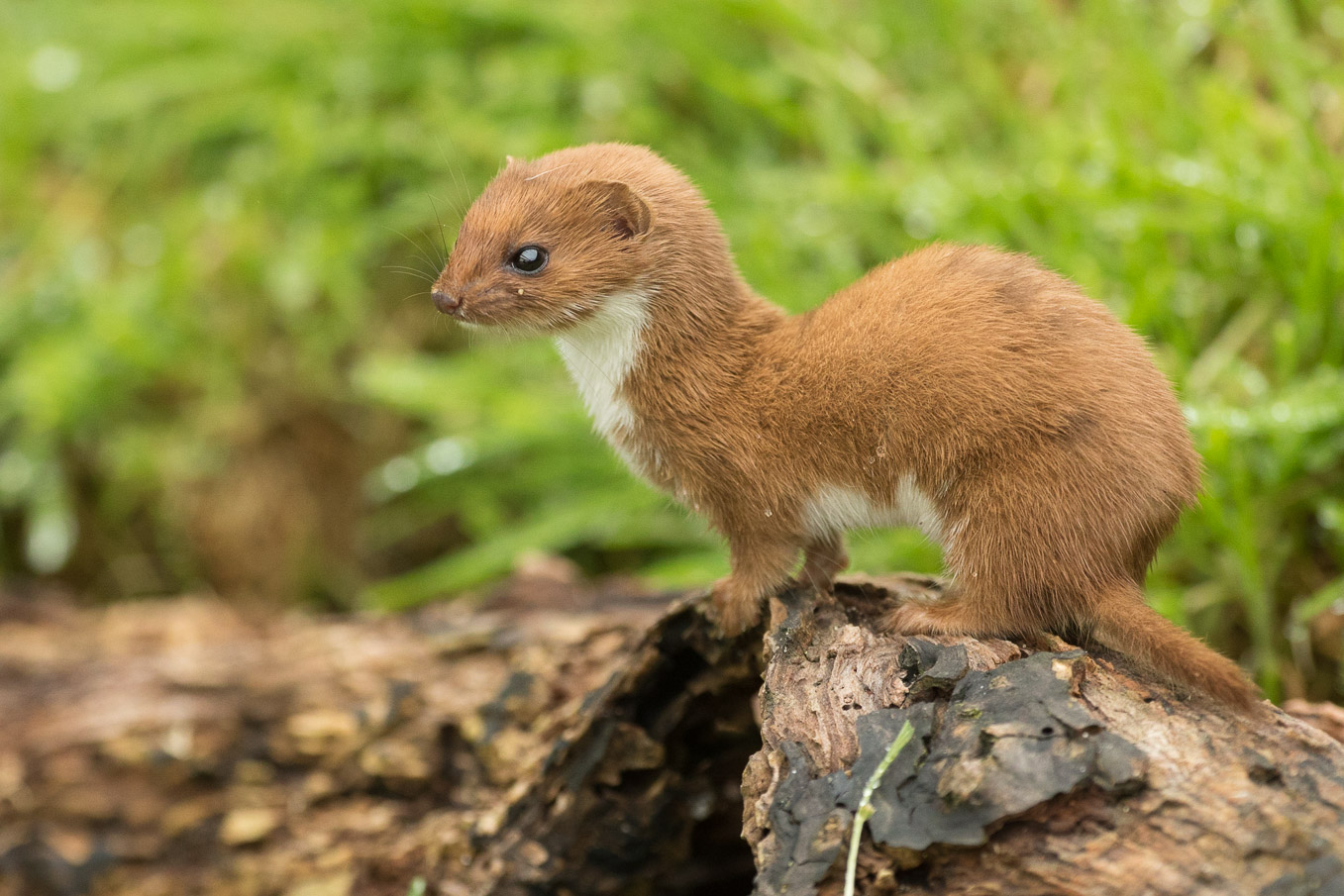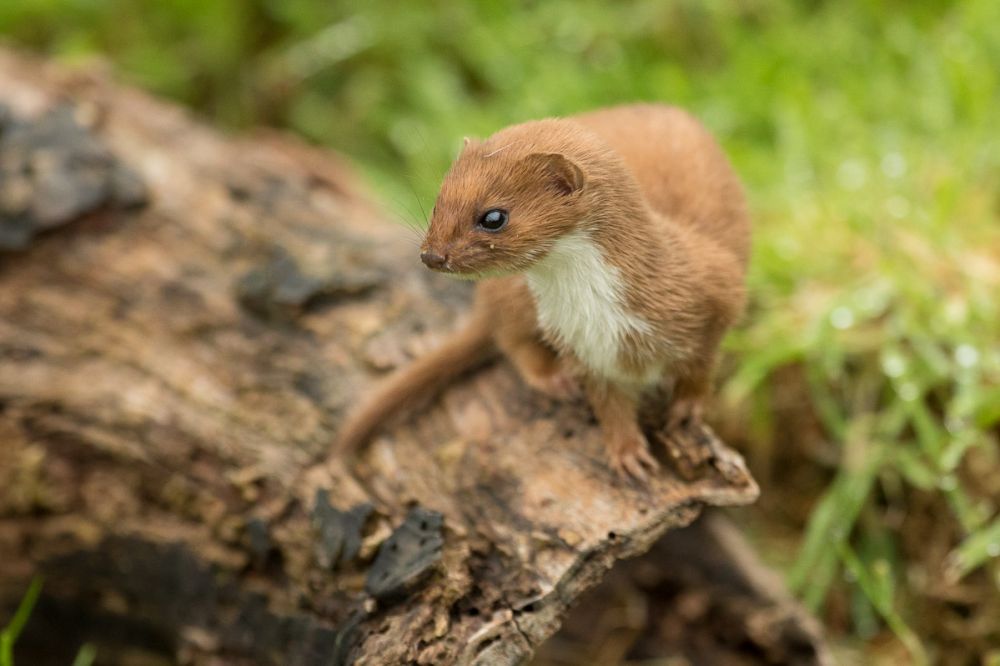
Stoats and weasels; which is which and how to see them
Everyone knows they are 'Weasily' recognisable and 'Stoatally' different, but to tell them apart you may need a bit more than a bad joke!
Stoats and weasels are the most common members of the mustelid family and can be encountered across much of the UK. They are extremely alike and often confused. Even when looking online you will find, with surprising regularity, images of each labelled as the other. In the UK there are several other species of mustelid (covered later) but stoat and weasel are by some way the smallest ones. If it is smaller than a grey squirrel then its most likely one of these two.
Fearsome little hunters
Stoats are the larger species which enables them to tackle bigger prey such as rats, young hares and famously rabbits. The endurance, speed and strength of stoats to tackle prey even larger than themselves is incredible and makes them once of the most fearsome predators in the British countryside. Despite their short legs they can run as fast as a rabbit and keep up the chase for several minutes tiring their prey. Their preference for rabbits makes them more likely to be found in open habitats and they are often encountered around country estates and golf courses where their antics amuse watchers.
Because of their diminutive size, weasels feature on the menu of many birds of prey including owls, kestrels and buzzards. For this reason they rarely venture far from cover and can be seen darting out of hedgerows or long grass. They don’t have the confidence of stoats so will hug boundary walls and fence lines. Their preferred prey of mice and voles are usually found in scrub, hedgerow and woodlands too so the weasel doesn’t have to venture far.
The weasels narrow body and short legs allow it to follow small prey into grassy tunnels, through cracks in dry stone walls and into dense cover. It is a good climber too and, during spring, will ascend into trees in search of birds nests. Like stoats they are not afraid to tackle larger prey too including rats and young rabbits. Famously a weasel was photographed hanging desperately onto the back of a green woodpecker that had managed to fly off the ground whilst being attacked.
Breeding:
Weasels have a breeding strategy like many other small animals with a long breeding season (generally spring to late summer), large litters of up to 13 and up to three litters depending on the abundance of food and the condition of the female. Young mortality though is high with many nests being predated by larger predators or young starving before maturity. Even as adults, most weasels do not reach their second birthday.
Stoats can also have large litters sometimes into double figure but breed only once a year. The female will mate at any time but delays pregnancy, ensuring birth in the spring. She is a doting mother and frequently moves the kits to different dens ensuring they are less likely to be sniffed out by foxes or badgers. Stoats like weasels are short lived and typically do not live much beyond a couple of years.
Both weasels and stoats will occupy den sites around their territory often taking over the tunnels and nests of prey species. During the colder months they may also line their dens with the fur from voles or mice they have eaten.
In very cold winters and particularly in the north of the UK some stoats will moult into a partially or fully white coat. The black tip to the tail remains however. It was in this condition known as ermine that they were prized for their fur and many were trapped.
Spot the difference
Size
This is often a good place to start with these species but can equally confuse the observer as a large male weasel could be similar in size to a small female stoat.
Stoats are 25-32cm with long tails that are around half as long as the body they weigh 140-445g. If it is rat sized or larger it is almost always going to be a stoat.
Typically weasels are much smaller ranging from 17-22cm with short tails less than 5cm in length. They only weigh between roughly 50 and 130g only a bit bigger than a large wood mouse.
Robert Fuller an artist who specialises in stoats and weasels has a lovely comparison. He describes the weasel as like a long sausage and the stoat as a cucumber!
Tail
The long, black tipped tail of the stoat is usually obvious except in very deep cover and is a clear indicator. Very young stoats can lack the black tip but generally would be unlikely to be encountered without their mother so if the tail doesn't have a black tip its almost certainly a weasel.
Fur
The fur of a stoat is neatly arranged with a clear and straight line between the brown top and the pale underside. The weasel has a messy line where the two colours meet and often there is one or more brown spots in the white chin fur. Think 'wavy weasel straight stoat!'
The pale fur on weasels is brilliant white whereas in stoats it is better described as off white or cream. This is hard to tell in the field though but can be used as additional evidence of an ID.
Head shape
To the experienced eye, stoats and weasels have slightly different shaped heads and stoats more prominent ears.
Movement
Weasels move like the voles that they hunt with flat straight runs. Stoats have more of a bounding gait. Both species regularly stand on their hind legs to look around for prey or danger and both carry prey by holding their long necks high. Weasels and stoats are good climbers and will also swim strongly when needed
How to see weasels and stoats
Both species can be difficult to 'look for' and more often seen through chance encounters. They do however stick close to the breeding den in the spring so can be spotted in the same place regularly. They also have favoured routes and if seen carrying something will sometimes be back using the same path again soon after if they are moving kits or raiding a voles nest.
Both species have poor eyesight and can sometimes be curious to investigate people. This behaviour can be encouraged by 'squeaking' softly by sucking against the back of your hand, this mimics distress calls by rabbits and may invoke weasels and stoats to come closer.
Signs of presence
Poo is long and thin (weasels: 3-6cm and stoats: 4-8cm), generally dark and can show fur or bones, smells musky.
Small mustelids can be elusive and hard to see, tracks and signs are also subtle compared to other species. For this reason remote camera traps are a great tool in surveying for their presence. Combining this with a box that invokes the animals inquisitive nature works especially well in a device called a mostela.
To find out more the Mammal Society have produced this excellent little guide
Meet the family
Other Mustelids include Polecats, American mink, pine marten and otter. The Vincent Wildlife Trust have a great guide to all the mustelids with specimens laid out for comparison check it out here. Badgers are also considered mustelids though a slightly more distant relation.
catching up with the elusive pine marten
Once you get to know this enigmatic family of mammals, chances are you will become hooked like me and will always been looking forward to your next encounter with a weasel (or was it a stoat!?)
